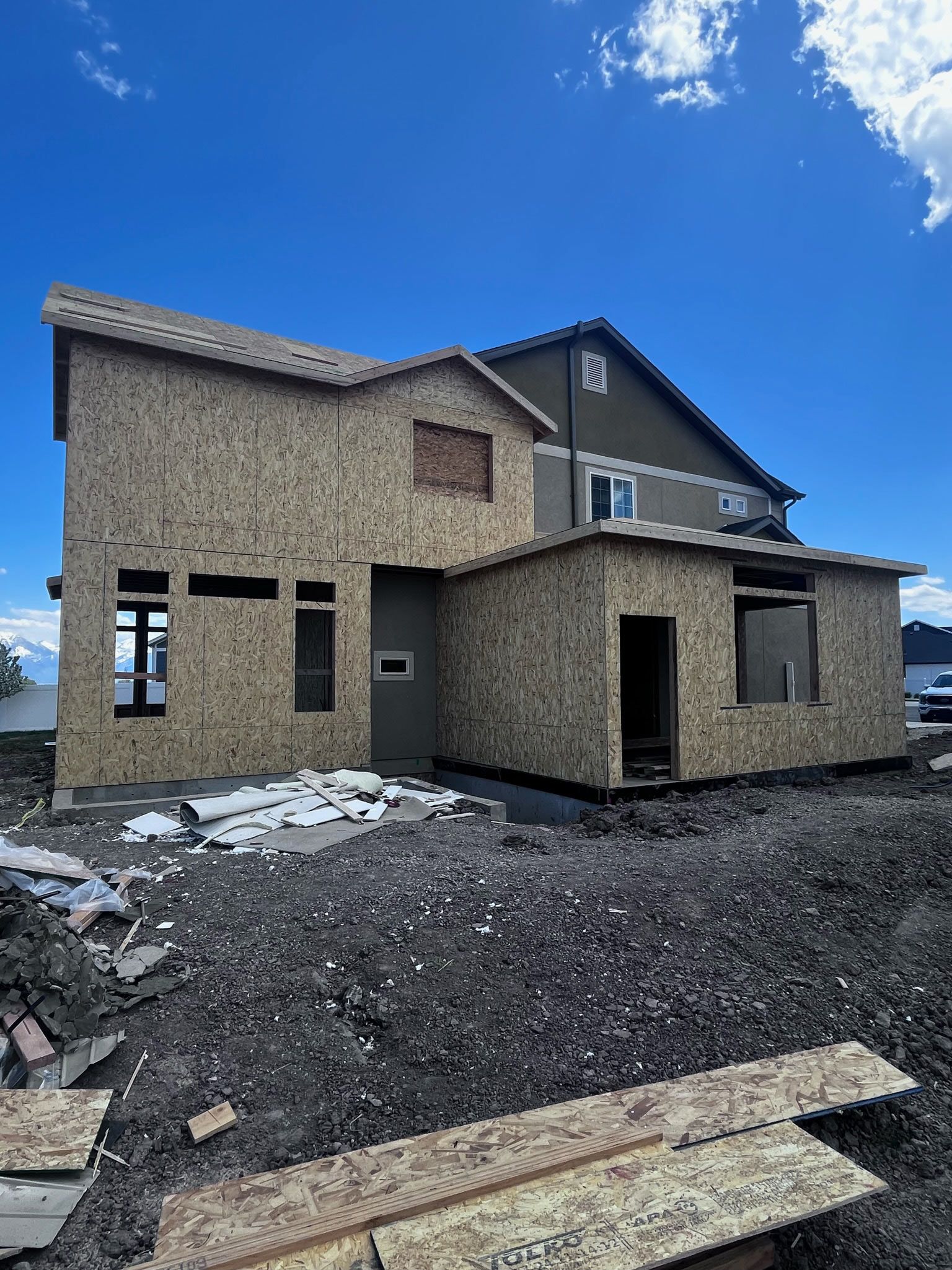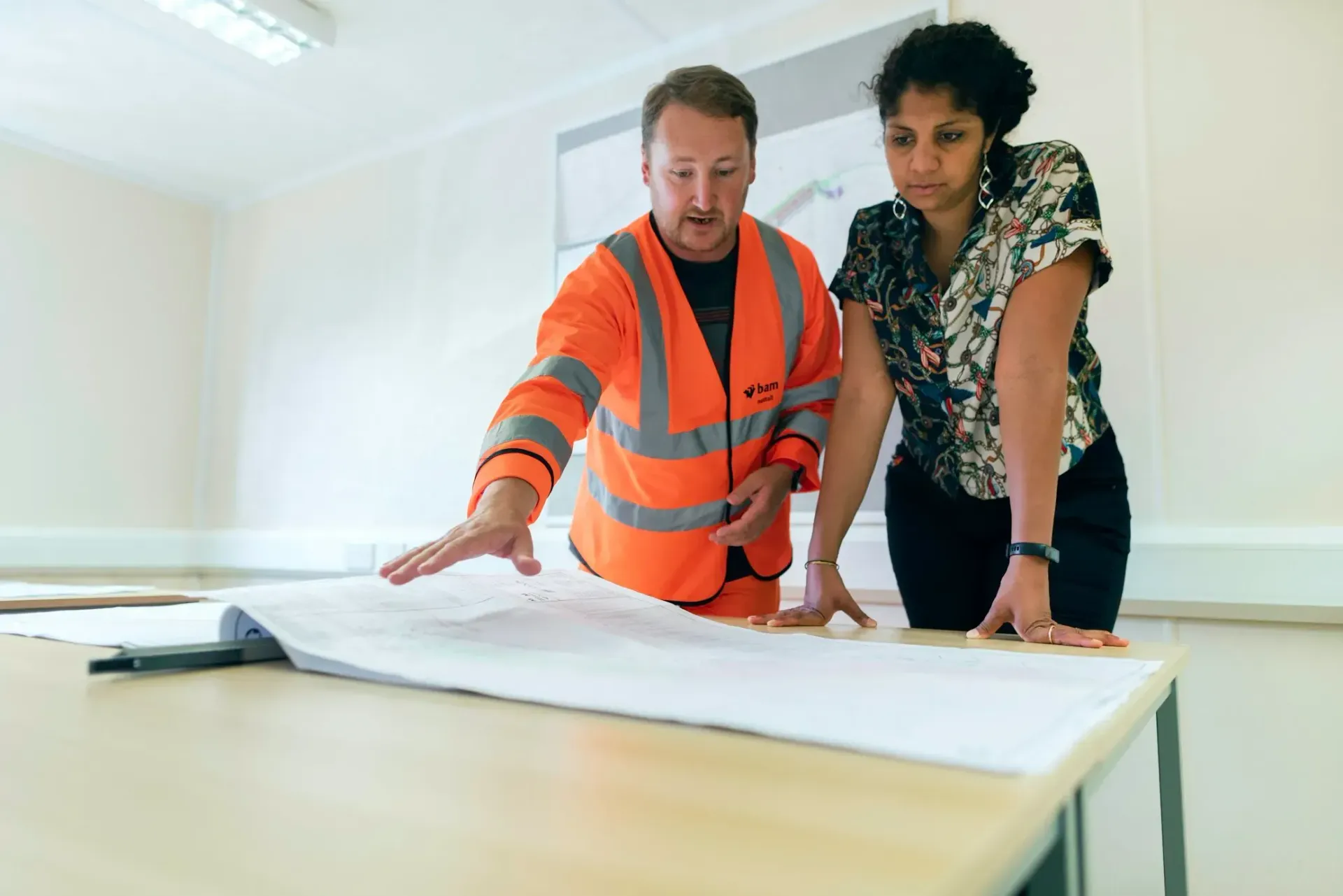Basement Planning Tips

Planning Your Basement the Right Way
Planning a basement renovation might seem like a big task, but it doesn’t have to be. With a solid plan, you can turn your basement into a functional and stylish part of your home.
A well-designed basement does more than add space—it adds value and purpose to your home. Whether you want an entertainment room, a home office, or a private guest suite, careful preparation makes all the difference.
This guide walks you through the essentials: assessing your space, choosing the right materials, setting a budget, and avoiding mistakes. Follow these steps, and you’ll avoid the headaches that come with poor planning.
Evaluating Your Basement’s Potential
Before diving into a basement renovation, you need to understand what you’re working with. Not every basement is ready for a makeover, and skipping this step can lead to costly problems down the road. Here's how to evaluate your space effectively.
Check for Moisture and Structural Issues
Water problems are a major concern in basements. Look for signs of dampness, leaks, or mold. If you notice any, address these issues first with waterproofing or foundation repairs. A dry basement is the foundation of a successful renovation.
Structural issues, such as cracks in the walls or floors, also need immediate attention. Consult a professional to inspect and recommend solutions if you find anything concerning.
Measure Ceiling Height and Ventilation
Many basements have low ceilings, which can limit your renovation options. Measure your ceiling height and check local building codes to see if it meets the minimum requirements.
Ventilation is another key factor. Make sure your basement has proper airflow and that any mechanical systems, like furnaces, won’t obstruct your design plans.
Understand Building Codes and Permit Requirements
Every renovation needs to follow local building codes. This is especially true for basements, where egress windows, electrical wiring, and fire safety rules come into play. Research your area’s requirements or consult a contractor to ensure your plans are compliant.
Taking the time to evaluate your basement upfront will save you time, money, and frustration later.
Establishing a Clear Vision for Your Basement Space
Before you start picking out flooring or paint colors, you need to decide how your basement will function. A clear vision helps you create a space that works for your needs and lifestyle.
Think About Your Family’s Needs
Ask yourself: What do you want from this space?
- Do you need extra bedrooms or a guest suite?
- Are you dreaming of a home theater or game room?
- Would a home office or gym fit your lifestyle better?
Choosing a purpose will guide every design decision, from the layout to the materials you use.
Explore Popular Basement Layouts
If you’re not sure where to start, here are a few common layouts to consider:
- Open Concept: Great for entertainment areas or multi-purpose spaces.
- Divided Spaces: Perfect for creating separate rooms like a bedroom, bathroom, or laundry area.
- Hybrid Layout: Combines open areas with a few closed-off rooms for maximum flexibility.
Plan for Future Flexibility
Your needs might change over time, so design with flexibility in mind. For example, a playroom today could become a teen hangout or home office later. Adding features like extra outlets or plumbing hookups can save you time and money down the road.
When you take the time to define the purpose of your basement, you’ll set the stage for a renovation that’s both practical and personalized.
How to Set a Realistic Basement Renovation Budget
A successful basement renovation starts with a budget that works for you. Knowing your financial limits helps you make smart choices and avoid surprises down the line.
Break Down the Costs
To create an accurate budget, consider all potential expenses:
- Materials: Flooring, walls, ceilings, lighting, and fixtures.
- Labor: Contractor fees, electricians, plumbers, and other specialists.
- Permits: Costs for building permits, which vary by location.
- Unexpected Expenses: Always set aside 10-20% of your budget for surprises like unforeseen repairs or upgrades.
Prioritize Needs vs. Wants
Focus on the essentials first. For example:
- Need: Waterproofing to protect your investment.
- Want: A custom entertainment system.
- Start with what’s necessary for safety and functionality, then allocate leftover funds to upgrades or luxuries.
Save Without Cutting Corners
Renovating a basement doesn’t have to break the bank. Here’s how to save wisely:
- Choose cost-effective materials: Opt for durable and affordable options like luxury vinyl flooring or drywall over pricier alternatives.
- DIY where possible: Simple tasks like painting or assembling furniture can cut costs.
- Shop smart: Look for sales, discounts, or reclaimed materials to stretch your budget further.
A realistic budget keeps your project on track and ensures you’re making investments that add value to your home.
Optimizing Your Basement’s Layout and Flow
A well-planned layout is the backbone of any successful basement renovation. Your design should make the most of your space while keeping it functional and visually appealing.
Maximize Natural Light
Basements often lack natural light, but there are ways to brighten the space:
- Install egress windows: These not only bring in sunlight but also meet safety requirements for bedrooms.
- Use glass doors or walls: They help light travel between areas.
- Choose light colors: White or pastel walls and ceilings reflect light, making the space feel bigger and brighter.
Decide Between Open and Sectioned Layouts
Your choice between an open-concept design and sectioned rooms depends on how you’ll use the space:
- Open Concept: Ideal for entertainment spaces or playrooms. Open areas feel larger and are great for social activities.
- Sectioned Layout: Perfect for creating privacy with separate rooms like bedrooms, bathrooms, or storage areas.
Incorporate Smart Storage Solutions
Basements are often used for storage, but that doesn’t mean it has to look cluttered.
- Built-in shelves or cabinets can keep items organized while blending with your design.
- Multi-functional furniture like ottomans with storage or wall-mounted desks maximizes usable space.
Ensure Smooth Traffic Flow
Plan the layout so moving between areas feels natural:
- Avoid obstructing pathways with furniture or fixtures.
- Group related areas together, like placing a bathroom near bedrooms or a bar near an entertainment area.
A thoughtful layout not only makes the basement functional but also creates a space that feels open and welcoming.
Selecting Durable and Stylish Materials for Your Basement
The materials you choose for your basement play a crucial role in its durability and appearance. Basements face unique challenges, like moisture and fluctuating temperatures, so it’s important to pick materials that can handle these conditions.
Flooring Options That Work Best
Basement floors need to be tough and moisture-resistant. Here are some of the best options:
- Luxury Vinyl Plank (LVP): Affordable, waterproof, and available in wood-like designs.
- Tile: Ideal for high-moisture areas like bathrooms or laundry rooms.
- Stained Concrete: A sleek, modern option that’s both durable and low-maintenance.
- Carpet Tiles: Great for adding warmth and comfort in areas like family rooms.
Avoid traditional hardwood flooring in basements, as it can warp in humid conditions.
Moisture-Resistant Walls and Insulation
Basement walls need to combat potential dampness.
- Foam board insulation is an excellent choice because it resists mold and moisture.
- Moisture-resistant drywall (also known as green board) provides added protection against humidity.
- Paint or sealants can add an extra layer of water resistance and protect your finishes.
Finishes That Add Style and Longevity
Choose finishes that can endure the basement environment without sacrificing aesthetics:
- Laminate or MDF trim instead of wood to prevent warping.
- Waterproof paints or vinyl wall coverings for easy maintenance.
- Drop ceilings with tiles that are easy to replace in case of leaks or repairs.
Durable materials ensure your basement remains beautiful and functional for years, no matter how you use it.
Brighten and Freshen Up Your Basement Space
Lighting and ventilation can make or break the comfort and usability of your basement. A well-lit and properly ventilated space feels inviting, functional, and healthier to use.
Layer Your Lighting
Since natural light is often limited in basements, rely on a combination of artificial lighting to brighten the space.
- Ambient Lighting: Use recessed lights or overhead fixtures to provide general illumination.
- Task Lighting: Add focused lighting like under-cabinet LEDs for workspaces, reading nooks, or bar areas.
- Accent Lighting: Use wall sconces, pendant lights, or LED strips to highlight specific features like artwork or built-ins.
A dimmer switch can give you control over the ambiance and make the space more versatile.
Maximize Natural Light Where Possible
Even small amounts of sunlight can make a big difference.
- Install egress or hopper windows to let in natural light while meeting safety codes.
- Place mirrors strategically to reflect light and make the room feel larger.
- Avoid heavy window treatments and opt for sheer or light-filtering options instead.
Ensure Proper Ventilation
Good airflow prevents musty odors and keeps the space feeling fresh.
- Install a dehumidifier to manage humidity levels and prevent mold growth.
- Ensure vents and HVAC systems reach the basement for consistent air circulation.
- Consider ceiling fans or air purifiers for additional ventilation in larger spaces.
Bright lighting and proper ventilation transform your basement into a space that’s not only livable but enjoyable.
Mistakes to Avoid When Planning a Basement Remodel
Even with the best intentions, it’s easy to make missteps during a basement renovation. Avoiding these common mistakes can save you time, money, and frustration.
Skipping Waterproofing
One of the biggest errors homeowners make is ignoring potential water issues. Even a small leak can cause big problems down the road.
- Inspect for moisture before starting the renovation.
- Install waterproofing solutions like sump pumps, vapor barriers, or foundation repairs to keep your basement dry.
Overlooking Permits and Building Codes
Skipping permits or ignoring building codes might seem like a way to save time, but it can lead to serious consequences:
- Unpermitted work can result in fines or complications when selling your home.
- Missing critical safety features, like egress windows, could pose hazards.
Always check local regulations and obtain necessary permits.
Neglecting Proper Insulation
Without proper insulation, your basement can become uncomfortable and inefficient:
- Poor insulation can make the space too cold in winter or too warm in summer.
- Moisture-resistant insulation prevents mold and keeps your basement energy-efficient.
Underestimating the Budget
Failing to account for unexpected costs can derail your project.
- Always set aside a contingency fund for surprises like hidden water damage or electrical upgrades.
- Be realistic about the cost of quality materials and professional labor.
Ignoring Future Needs
Designing a basement that only works for your current lifestyle can limit its long-term value.
- Plan for flexibility by creating spaces that can adapt to future uses, like a growing family or changing interests.
- Include extra outlets, plumbing access, or multi-functional spaces to future-proof your renovation.
Avoiding these mistakes ensures your basement renovation goes smoothly and delivers a space you’ll love for years.
Should You Hire a Professional for Your Basement Project?
When planning a basement renovation, one of the most important decisions you’ll make is whether to hire a professional or tackle the project yourself. Both options have their pros and cons, and the right choice depends on your skills, budget, and the complexity of the job.
The Benefits of Hiring a Professional
Working with an experienced contractor can save you time and ensure high-quality results.
- Expertise: Professionals know how to handle structural, electrical, and plumbing challenges that often arise in basement projects.
- Efficiency: Contractors have the tools and workforce to complete the project faster.
- Compliance: They ensure your renovation meets all building codes and safety requirements.
Pro Tip: Before hiring, ask for references, check reviews, and confirm they are licensed and insured.
When DIY Makes Sense
If you have the right skills and tools, handling some parts of the project yourself can save money.
- Painting, decorating, or installing flooring are great DIY tasks for homeowners with basic skills.
- Assembling furniture or adding finishing touches like shelving can be cost-effective and rewarding.
However, leave complex work like wiring, plumbing, and structural changes to the experts.
Questions to Ask a Contractor
If you decide to hire a professional, use these questions to find the right fit:
- How much experience do you have with basement renovations?
- Can you provide a detailed estimate and timeline?
- Do you handle permits and inspections?
- Do you offer a warranty on your work?
Choosing the right approach—whether DIY or hiring a pro—can make all the difference in achieving a smooth and successful basement renovation.
Transform Your Basement with Expert Planning
A well-planned basement renovation doesn’t just add space—it adds value and functionality to your home. By assessing your space, defining its purpose, choosing durable materials, and avoiding common mistakes, you can create a basement that’s both beautiful and practical. Whether it’s a cozy family room, a productive home office, or a private guest suite, careful planning ensures your investment pays off.
When it comes to bringing your vision to life, trust the experts at Foundation Finishes. Based in Centerville, UT, they specialize in basement finishing, home remodels, home additions, bathroom remodeling, and kitchen remodeling. Their team ensures every detail meets your expectations while adhering to the highest standards of quality and craftsmanship.
Don’t let your basement’s potential go to waste. Contact Foundation Finishes today to schedule a consultation and start transforming your home.


